
Humans have enjoyed smoking plants and substances for thousands of years, and few are more famous than cannabis. It has been used for medicine and recreation for as long as humans have known about it. It is a miracle plant whose fibers can be used for clothing, ropes, and more.
With the recent trend of decriminalization and legalization of cannabis around the globe, doctors are rediscovering many of the health benefits associated with this plant. Some clinically proven benefits include pain management, reduced inflammation, sleep management, muscle relaxants, and effective treatment for illnesses such as certain mental health disorders, fibromyalgia, endometriosis, Parkinson’s disease, interstitial cystitis, and other chronic pain illnesses.
All the data for this list is taken from public filings from cannabis dispensaries. Obviously, illegal cannabis transactions aren’t included here.
Background on Cannabis

Before the War on Drugs, cannabis was successfully being grown and sold on every continent on earth, as it had been for centuries. The Chinese are thought to be the first growers of cannabis around 600 BCE. Culturally, Muslim societies refer to cannabis as hashish and is referred to as “the bush of understanding,” and the “morsel of thought.” But with as many cultures that value and use cannabis, almost an equal amount has banned or discouraged its use at one point or another throughout history. Despite the efforts of governments (led by the United States) to eradicate this miracle plant, indigenous societies and everyday people continued to use it.
The name ‘marijuana’ was actually invented in the 1930s by the U.S. Government in order to make it sound more foreign and dangerous and associate it with Mexican immigrants in order to scare white people away from it at the start of its War on Drugs. It is more acceptable, and accurate, to refer to it as cannabis, or by any of its cultural nicknames.
Why Are We Talking About This?

Cannabis is here to stay, and no amount of government propaganda, religious pressure, or cultural resistance will make it go away. If you fear cannabis, then the best remedy is information. If you support cannabis, then knowing where people buy it can be both helpful and interesting.
#20 Switzerland
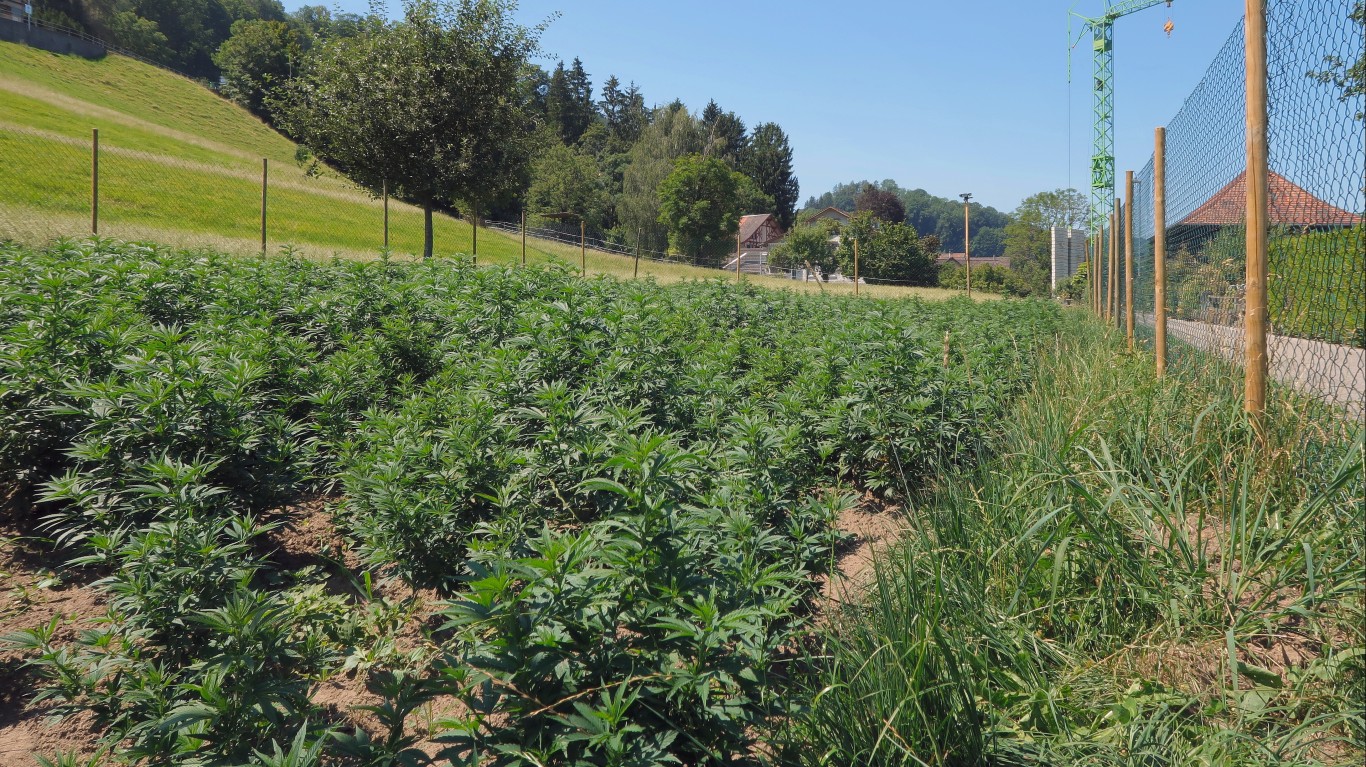
The annual prevalence of cannabis use in Switzerland is 7.7%. It is projected to generate US$138.9m in revenue by the end of 2024. Although cannabis is still illegal, the Swiss Federal Government is currently authorizing trials to experiment with decriminalizing recreational cannabis. There is already a precedence for this in Switzerland. The same process happened when the country legalized prescription heroin and safe injection sites in the 90s.
#19 Argentina
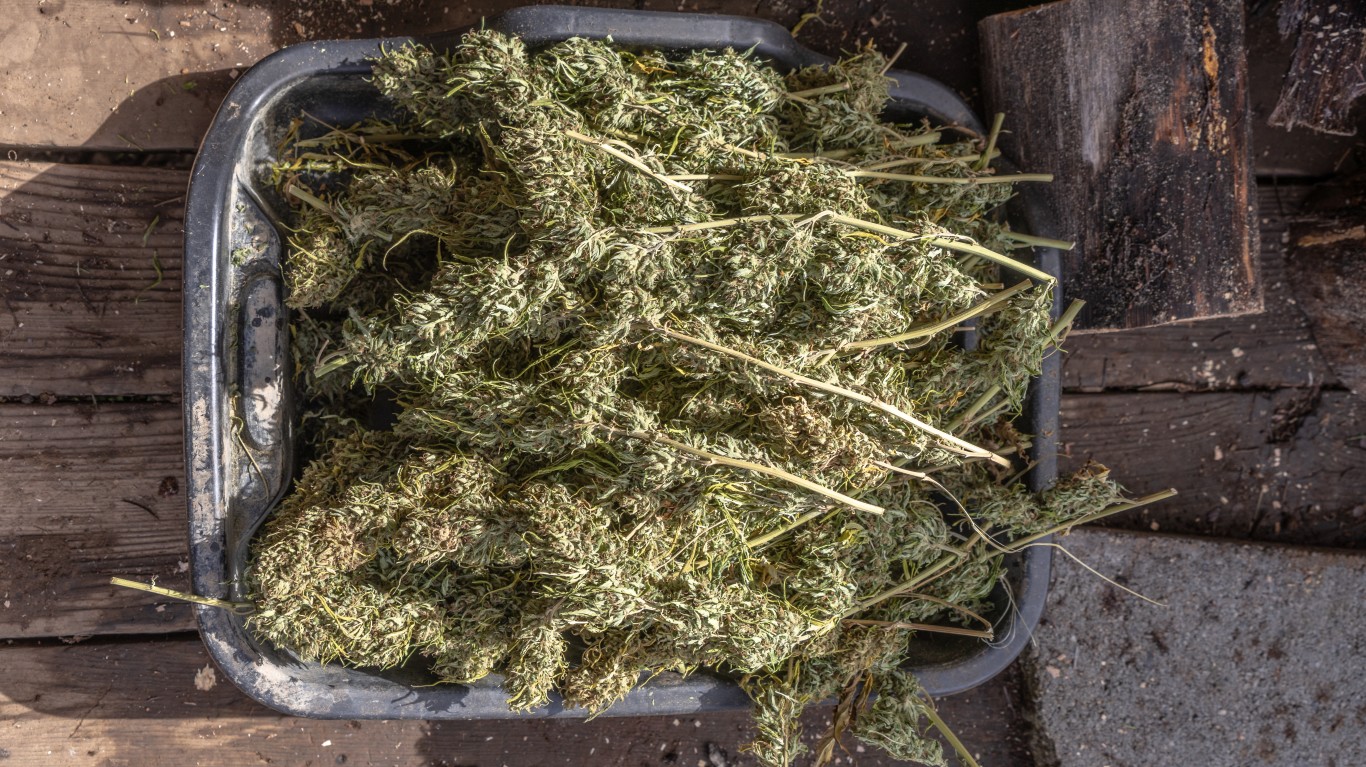
The annual prevalence of cannabis use in Argentina is 8.13%. The cultivation, distribution, and sale of cannabis is illegal, and possession is decriminalized under a certain amount. Similar to the U.S., some Argentinian provinces have decriminalized cannabis for personal and recreational use. The country plans to legalize cannabis for medical use in the near future.
There are currently 51 regulated research and development projects being conducted by the ARICCAME cannabis agency in the country to establish a regulatory framework to enter the weed export market. Argentina currently allows cannabis-derived products in pharmacies and insurers have to cover prescription cannabis-based medications. The Argentinian government’s goal is to create 10,000 direct jobs, $500 million in domestic sales, and $50 million in export sales by 2025.
#18 Finland

The annual prevalence of cannabis use in Finland is 8.2%. Cannabis is the most used drug in Finland. Cannabis is commonly used by approximately 30% of Finnish adults. It is projected that revenue will reach US$41.87 million by the end of 2024. Recreational cannabis use is currently illegal in Finland, but there are bills that have been recently proposed to parliament to decriminalize it. Medical cannabis use has been legal in Finland for over a decade, and CBD oil can be purchased at most pharmacies.
#17 Croatia
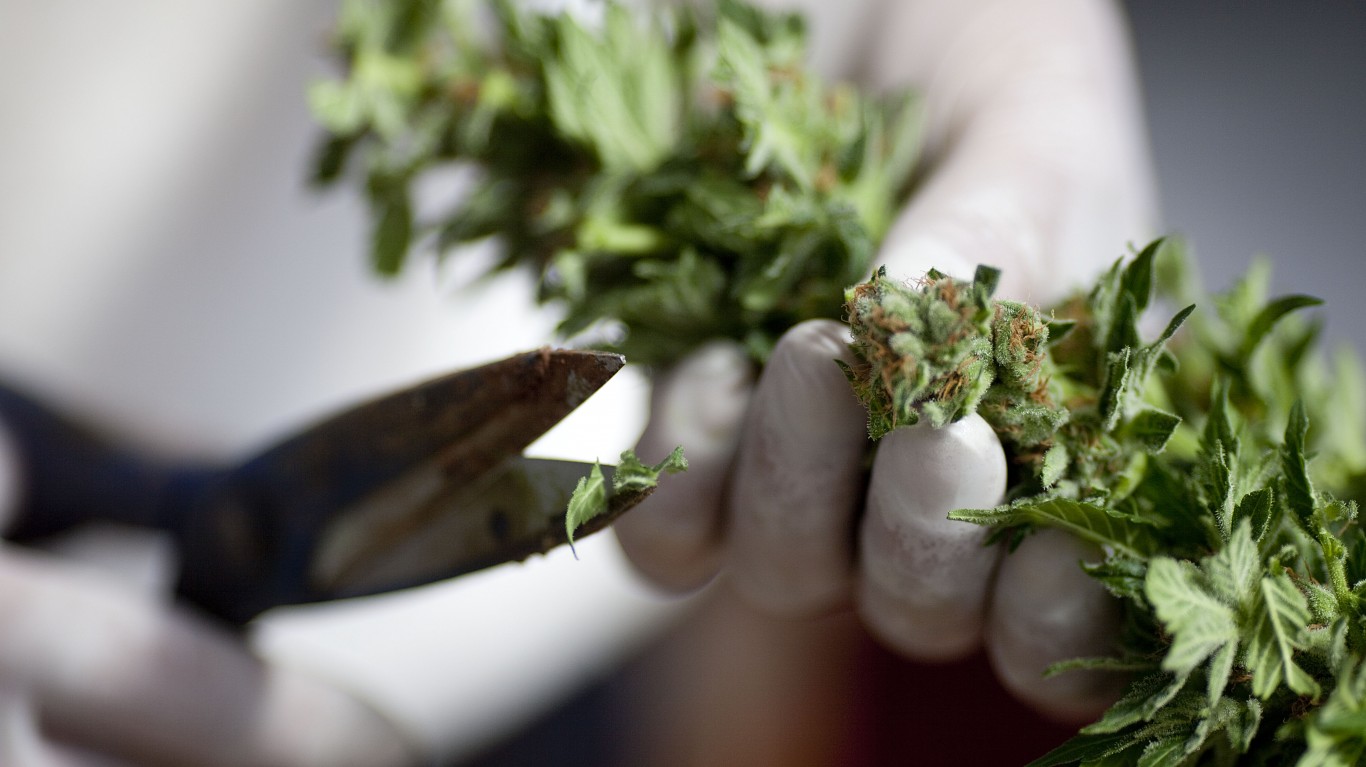
The annual prevalence of cannabis use in Croatia is 10.2%. The revenue of the cannabis market in Croatia is projected to reach US$45 million by 2024. Cannabis is a banned substance in Croatia, with possession for personal use punishable as a misdemeanor with a fine. Cannabis falls under the “Soft Drugs,” category in Croatia, so minor offenses have been decriminalized. Medical cannabis use is legal but strictly regulated.
#16 Italy
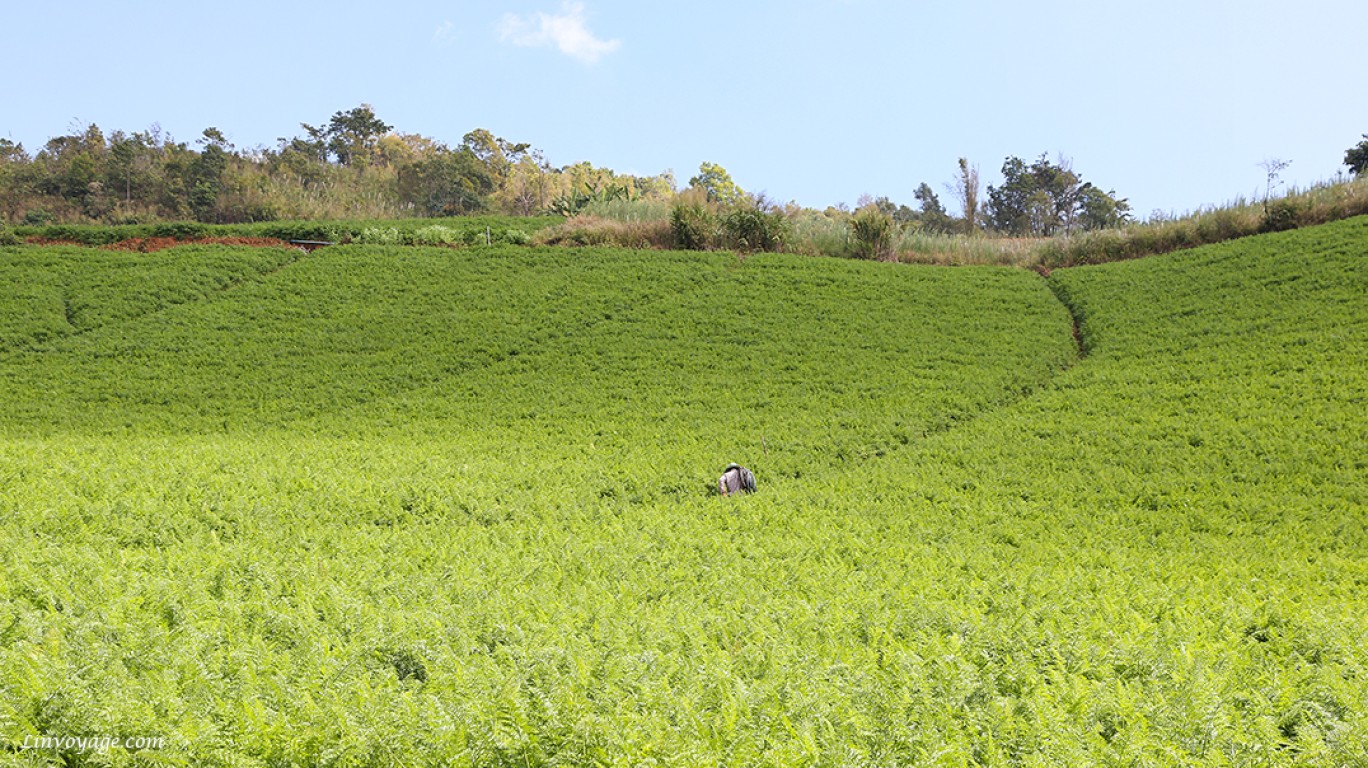
The annual prevalence of cannabis use in Italy is 10.21%. Cannabis is decriminalized for recreational use, and legal for medical and industrial uses. It is projected to reach a revenue of US$312.5 million by 2024. 17% of high-school-aged kids in Italy said they consumed cannabis at least once.
Italy has a “cannabis light” industry, which produces and sells low-THC cannabis products. Products with a THC content lower than 0.6% are legal to cultivate, sell, and consume. Italy is currently using Canada as a regulatory blueprint and has proposed legislation to widen the use of medical cannabis, regulate the production and sale of low-THC cannabis products, and protect consumers from misleading information on unregulated products.
#15 Netherlands
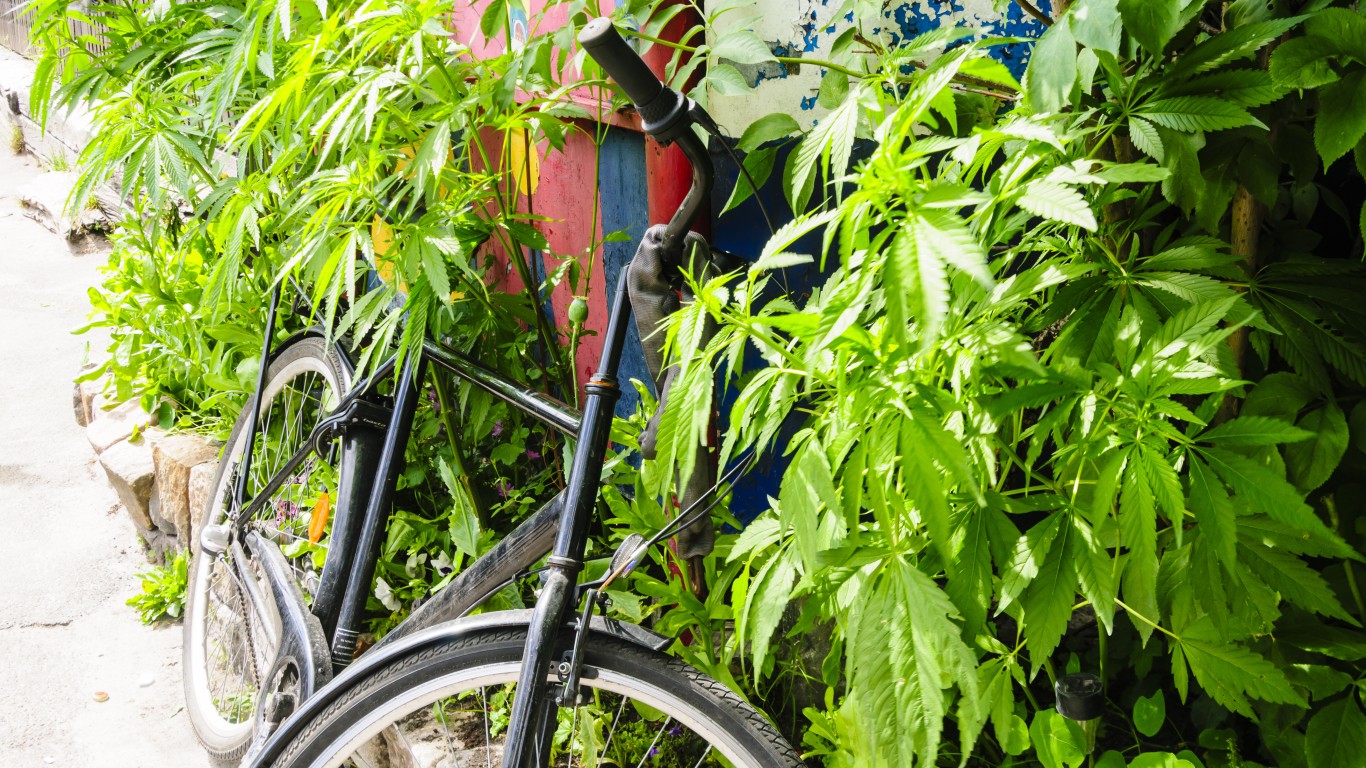
The annual prevalence of cannabis use in the Netherlands is 10.4%. The Netherlands is projected to reach US$269.8 million in revenue by the end of 2024. Not only is cannabis legal, it is available for purchase in Dutch coffee shops and has been since 1976. Amsterdam has been the capital of cannabis tourism for the last 4 decades, but that might change this year. The current Mayor of Amsterdam, Mayor Femke Halsema wants to ban foreigners from its cannabis cafes.
#14 Monaco
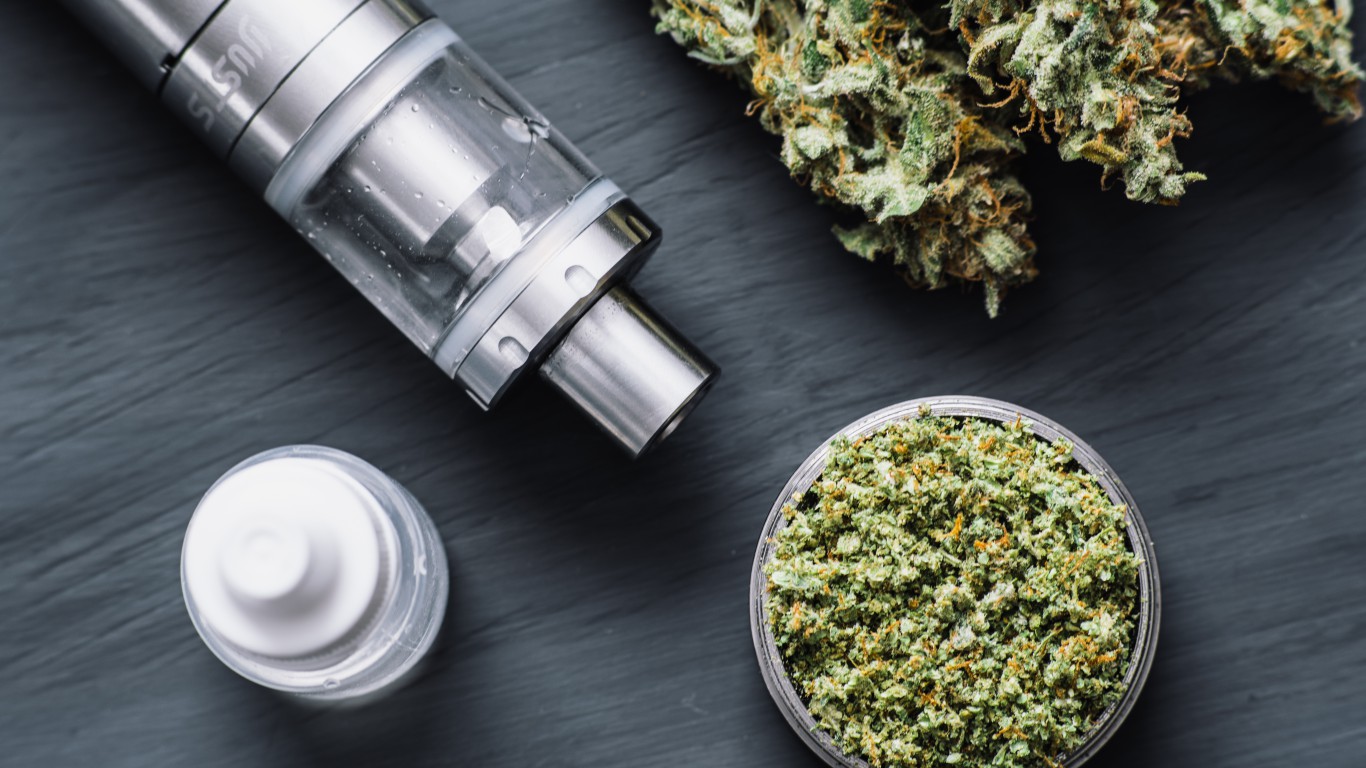
The annual prevalence of cannabis use in Monaco is 10.47%. Although medical and recreational cannabis use in Monaco is illegal, possession of small amounts often gets disregarded as a misdemeanor. It is a socially acceptable drug in Monaco culture. Under the law, being caught with any amount of cannabis is punishable by a fine and up to a year in prison. CBD products are available in Monaco within a legal gray area.
The country makes no distinction between hemp and cannabis plants, but the EU Court ruled in 2020 that CBD products are not intoxicating, so countries part of the European Union cannot prohibit legally produced cannabidiol from other EU countries. Monaco is not a member of the EU, so it doesn’t have to follow the ruling. Despite the legal ambiguity, there are several CBD shops throughout the country. Tourists are advised to not bring cannabis into Monaco, as that is considered drug trafficking.
#13 Morocco

The annual prevalence of cannabis use in Morocco is 10.47%. Morocco is one of the world’s top cannabis producers and is regulated for medical, cosmetic, and industrial purposes, while consumption for recreational uses is illegal. Morocco was the top global producer of cannabis resin from 2002-2010.
The first legal harvest of cannabis in 2023 was 294 metric tons, according to Morocco’s Agency for the Regulation of Cannabis-Related Activities (ANRAC).
#12 Spain

The annual prevalence of cannabis use in Spain is 10.5%. You can purchase some of the cheapest weed in the world in Spain. Although cannabis for recreational use is technically illegal, there are gray areas for Madrid’s famous cannabis clubs. Revenue for the recreational use market in Spain is projected to reach US$1.53 billion by the end of 2024.
#11 Nigeria
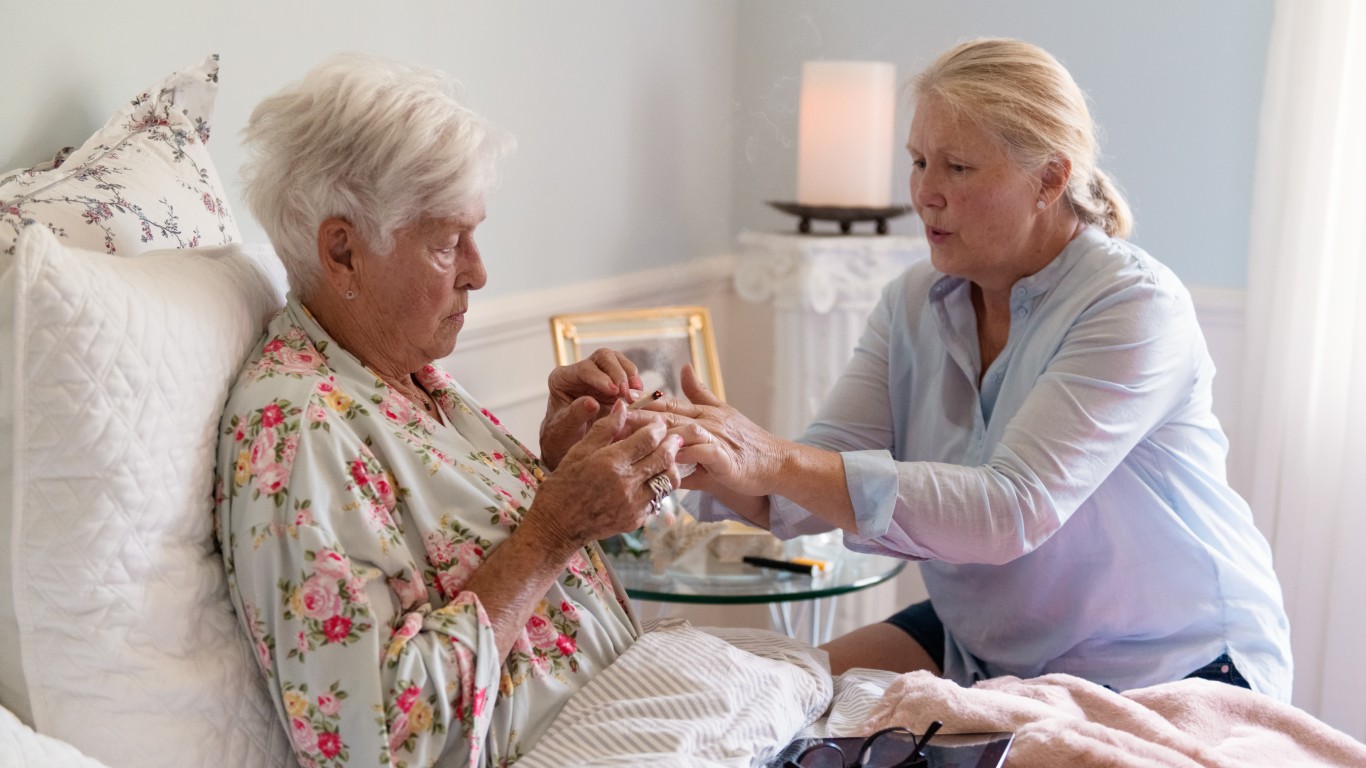
The annual prevalence of cannabis use in Nigeria is 10.76%. Nigeria consumes the most weed out of any other African country. Cannabis is a large export for Nigeria and is produced for both export and domestic consumption. The cannabis industry was worth US$3.7 billion in 2023.
#10 France

The annual prevalence of cannabis use in France is 11%. Cannabis use is most popular among people aged 33 and older in France. Interestingly enough, France is seeing a decline in cannabis use among younger age groups. The value of the cannabis market in France was EUR 598 million Euros in 2023. France is also a big consumer of CBD and other non-intoxicating cannabinoids, which is legal.
#9 Czech Republic
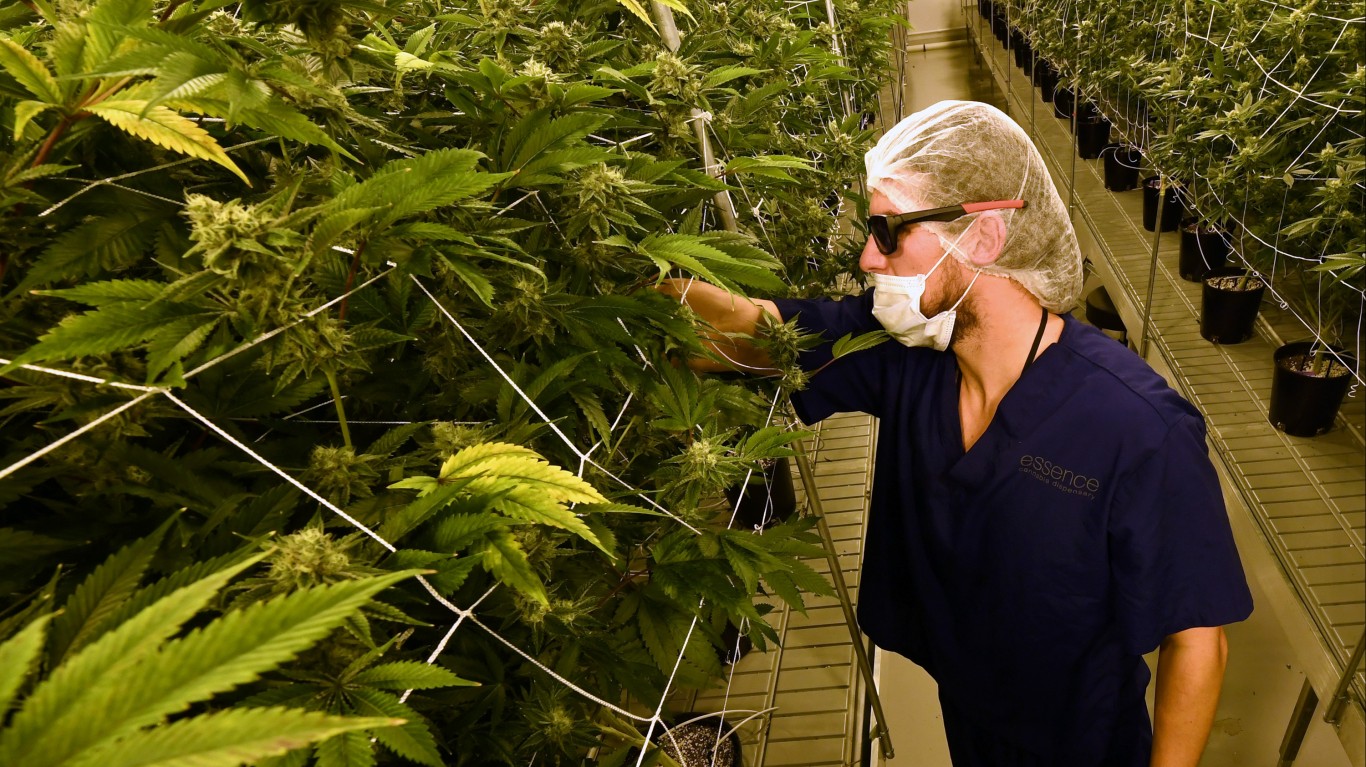
The annual prevalence of cannabis use in the Czech Republic is 11.1%. In line with its 2023-2025 Addiction Policy Action Plan, cannabis is set to be fully legalized by the end of 2025. This would make it the first country in the European Union to have a legalized cannabis market. The market was worth US $41 billion in 2023.
#8 Australia
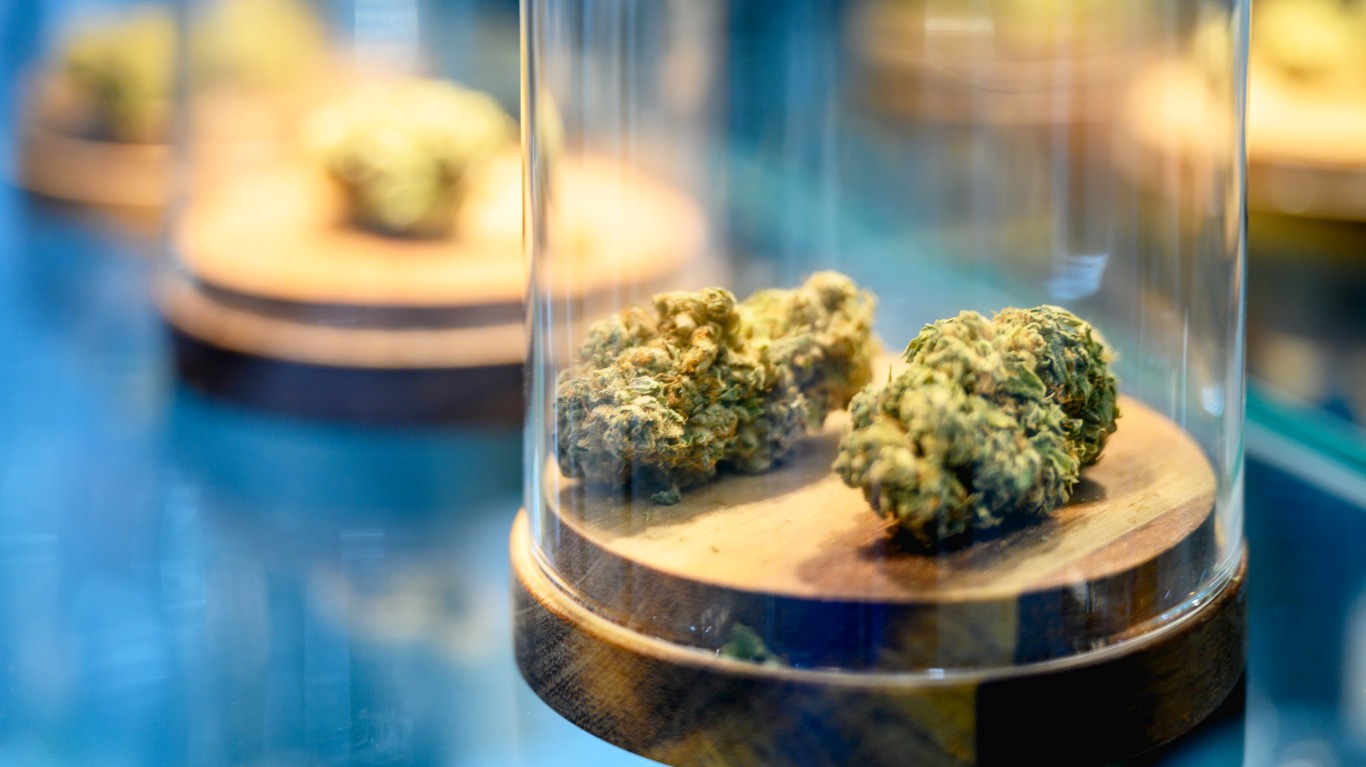
The annual prevalence of cannabis use in Australia is 11.6%. 36% of people over the age of 14 have said that they have tried cannabis at least one time. Cannabis and hemp were legalized in 2021 and the industry was valued at 51.8 million US dollars that year and grew to be worth 88.1 million US dollars in 2023. It is expected to grow 27.8% by 2030.
#7 Chile
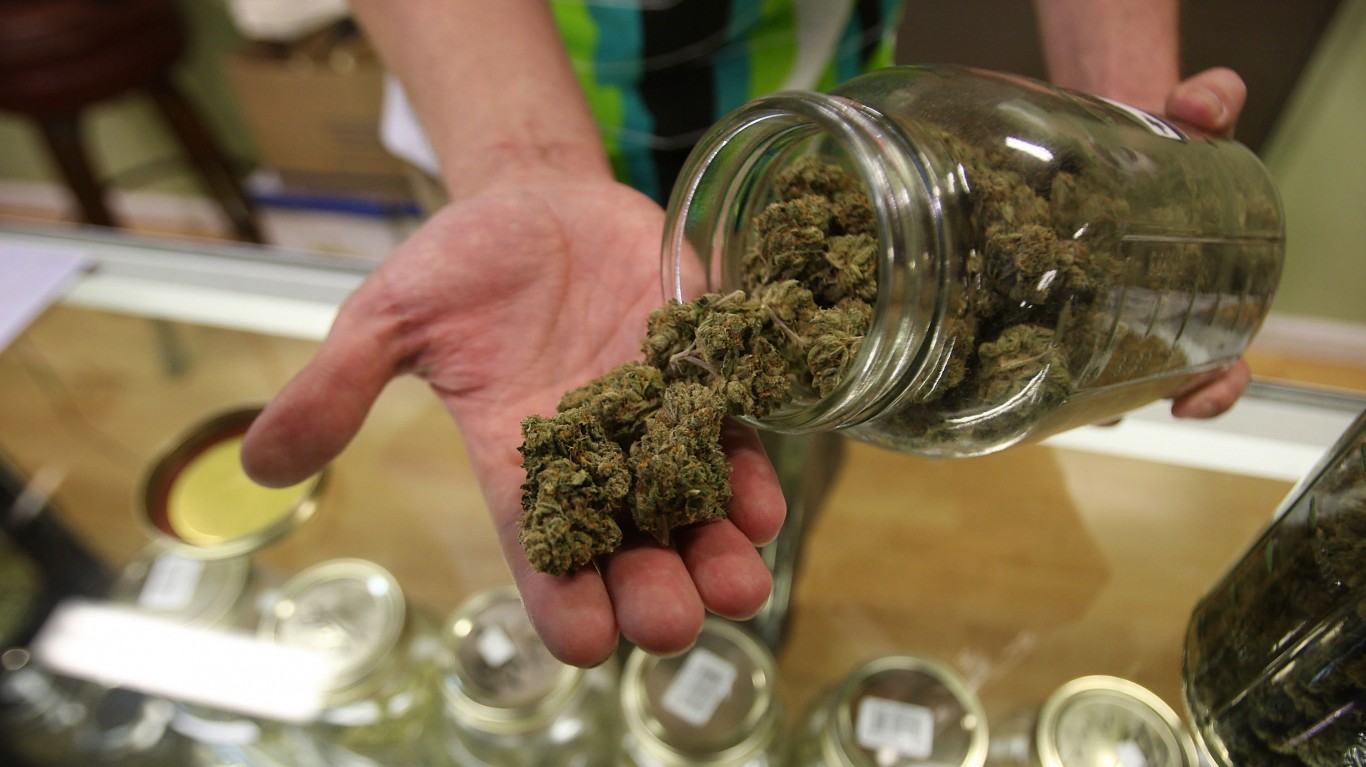
The annual prevalence of Cannabis use in Chile is 12%. Recreational cannabis use is currently illegal in Chile. Chilean authorities seized 285,000 plants in 2020. Medical cannabis use is legal and had sales revenue of USD 4.44 million in 2023.
#6 Israel

The annual prevalence of cannabis use in Israel is 14%. Recreational cannabis use is illegal but is socially permissible and openly tolerated. Medical cannabis is highly regulated. The medical cannabis industry brought in USD 12.4 million dollars in revenue in 2023.
#5 Uruguay

The annual prevalence of cannabis use in Uruguay is 14.6%. Cannabis has been legal in Uruguay since 2013. It was the very first country ever to legalize cannabis. Since then, cannabis has been one of the most widely used drugs in the nation. 3 companies produce weed, and 37 pharmacies are authorized to sell weed. Pharmacies have sold over 10,693,210 grams of cannabis between 2017 and 2019. Cannabis is one of the country’s largest exports.
#4 New Zealand

New Zealand has an annual prevalence of cannabis use of 15.3%. Recreational cannabis use is currently illegal in New Zealand. One in six New Zealanders aged 15-65 define themselves as regular users of Cannabis. The medical cannabis market in New Zealand is worth USD $28 million. Around $1 billion worth of illicit cannabis is consumed in New Zealand annually, which is roughly 74 metric tons.
#3 Jamaica
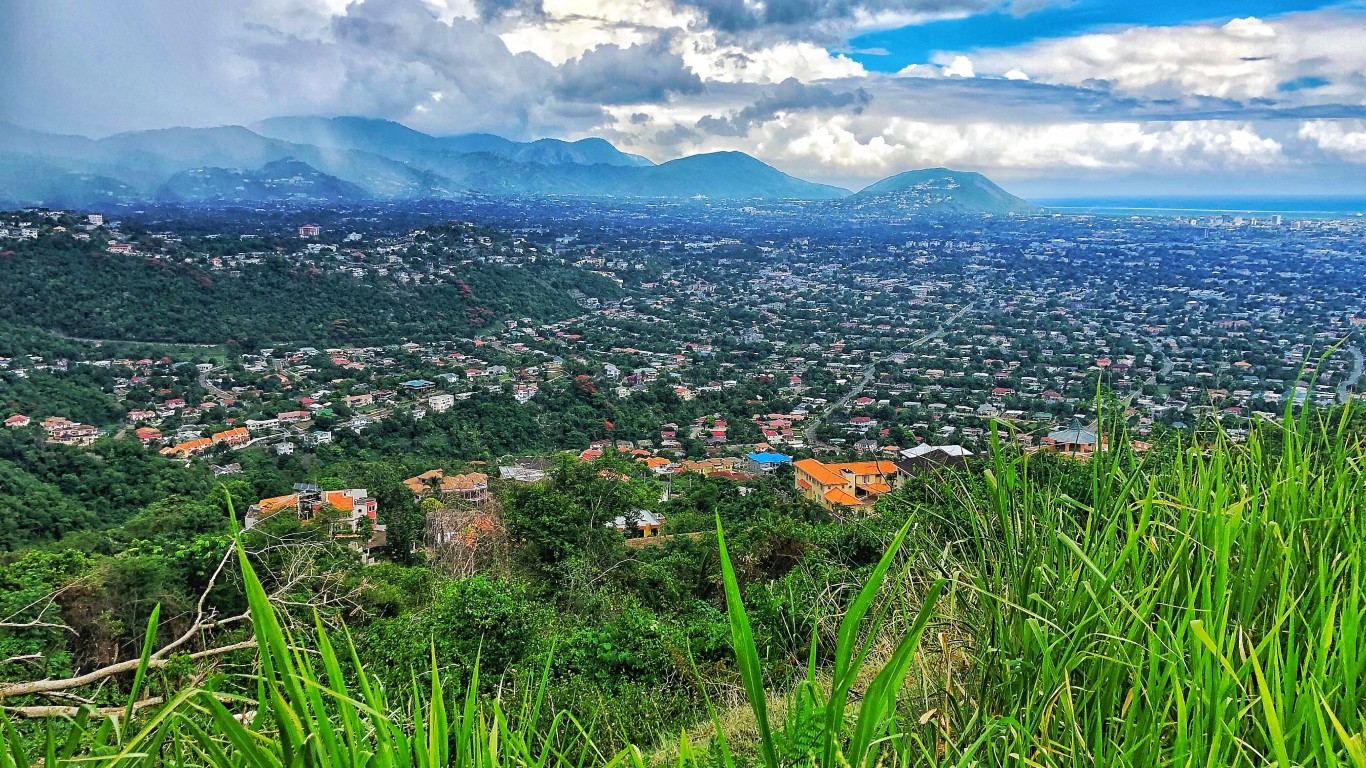
Jamaica has an annual cannabis prevalence use of 18%. Medical cannabis sales brought in a revenue of USD$3897 million. Cannabis is referred to as Ganja in Jamaica and is deeply rooted in Jamaica’s history and culture, although currently illegal. Jamaica did, however, decriminalize possession of under 2 ounces and legalized medical cannabis consumption in 2015.
#2 Canada

In 2023, recreational cannabis sales brought in a revenue of USD$3.8 billion. Canada was the first G20 country to legalize cannabis and has set a blueprint for cannabis regulations for the rest of the world. Currently, there are more than 3,000 retail locations in the country.
#1 United States of America
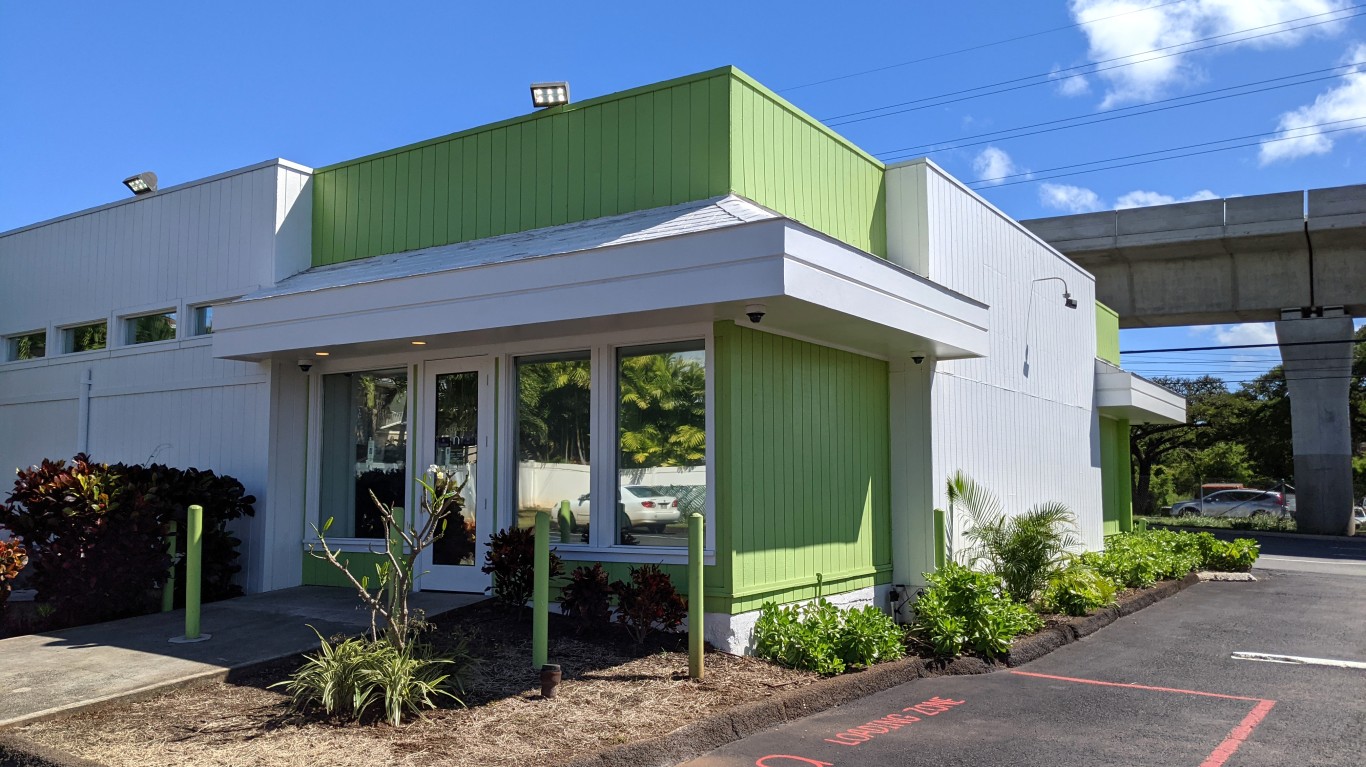
The biggest consumer of legal and illegal weed in the world is the United States of America. The annual prevalence of cannabis use is 22.8%. Medical and recreational cannabis sales brought in $33.6 billion in revenue in 2023. As of the end of 2023, 24 states as well as the District of Columbia, Guam, and the Northern Mariana Islands have legalized weed, although it still remains federally illegal.
California alone is the single largest cannabis market in the world. The United States is also at the forefront of cannabis innovation with new products such as vapes, cannabis-infused beverages, and edibles. The company that has the largest market share in the regulated market is Curaleaf Holdings, Inc. It’s a Massachusetts-based company that is the current leader in medical and recreational cannabis distribution. Curaleaf Holdings also has a presence in the U.K. and Germany.
Get Ready To Retire (Sponsored)
Start by taking a quick retirement quiz from SmartAsset that will match you with up to 3 financial advisors that serve your area and beyond in 5 minutes, or less.
Each advisor has been vetted by SmartAsset and is held to a fiduciary standard to act in your best interests.
Here’s how it works:
1. Answer SmartAsset advisor match quiz
2. Review your pre-screened matches at your leisure. Check out the advisors’ profiles.
3. Speak with advisors at no cost to you. Have an introductory call on the phone or introduction in person and choose whom to work with in the future
Thank you for reading! Have some feedback for us?
Contact the 24/7 Wall St. editorial team.


